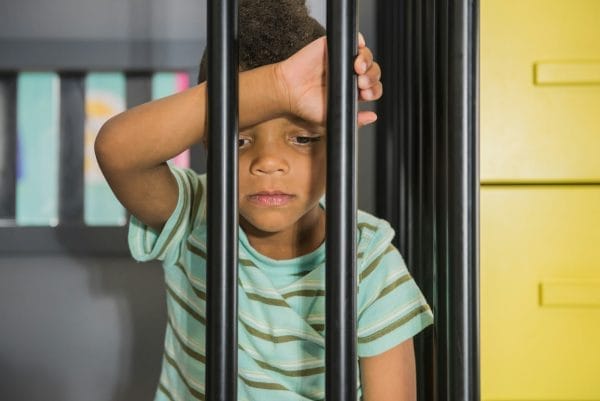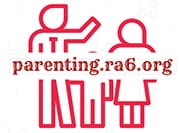Juvenile Delinquency: Causes, Consequences, and Solutions in Society
When we hear the term “juvenile delinquency,” it often conjures up images of young people engaged in mischief or criminal activities. But what exactly does this term encompass, and why does it matter in our society?
This article aims to break down the concept of juvenile delinquency, explore its causes and consequences, and highlight efforts to address it, such as the Juvenile Justice and Delinquency Prevention Act. We will also touch upon how this issue is portrayed in popular media, like movies about juvenile delinquency.

Table of Contents
What Is Juvenile Delinquency: The Basics

Juvenile delinquency refers to a range of behaviors, from minor rule-breaking to serious crime, committed by individuals typically under the age of 18. This age may vary from one jurisdiction to another, but the premise remains the same: it’s about illegal or antisocial actions by minors. The juvenile delinquency definition covers a broad spectrum of offenses, including vandalism, theft, assault, drug abuse, and more serious felonies.
Understanding juvenile delinquency requires a look at the developmental stages of childhood and adolescence. During these formative years, young people are still learning to navigate social norms, control impulses, and understand the consequences of their actions. The combination of immaturity, a lack of experience, and sometimes a challenging environment can lead to delinquent behavior.
Causes of Juvenile Delinquency

There’s no single cause for juvenile delinquency; rather, it’s usually the result of multiple factors that vary from one individual to another. Some of these include:
- Family Influences: Family dynamics and parenting styles have a significant impact on children’s behavior. Neglect, abuse, or a lack of supervision can contribute to delinquent acts.
- Socioeconomic Factors: Poverty, lack of education, and living in crime-ridden neighborhoods can increase the likelihood of juvenile delinquency.
- Peer Pressure: Young people are often influenced by their peers, and the desire to fit in or be accepted can lead to problematic behaviors.
- Substance Abuse: The use of drugs and alcohol can impair judgment and lead to criminal activities.
- Mental Health Issues: Disorders such as ADHD or conduct disorder can manifest in behaviors that are categorized as delinquent.
It’s important to note that these factors do not guarantee a young person will become delinquent; they merely increase the risk. Many children exposed to these risk factors grow up without engaging in delinquency.
Consequences of Juvenile Delinquency

The effects of juvenile delinquency are far-reaching, impacting not only the young individuals involved but also their families, victims, and society as a whole. Delinquent behavior can lead to:
- Legal Repercussions: Interaction with the juvenile justice system, which may include detention, probation, or other forms of punishment.
- Disruptions in Education: Delinquency can result in expulsion from school or missing out on educational opportunities, affecting future employment prospects.
- Social Stigma: Being labeled as a “delinquent” can lead to isolation and a negative reputation, making it harder to reform and integrate into society.
- Continued Criminal Behavior: Juvenile delinquency can be a gateway to adult criminal activity, particularly when not addressed effectively.
The consequences underscore the importance of effective interventions to prevent and address juvenile delinquency.
The Juvenile Justice and Delinquency Prevention Act

The United States government has recognized the unique challenges posed by juvenile delinquency and has enacted legislation like the Juvenile Justice and Delinquency Prevention Act (JJDPA) to address them. This landmark federal legislation, first passed in 1974 and subsequently reauthorized, aims to prevent and control juvenile delinquency and improve the juvenile justice system.
Key objectives of the JJDPA include:
- Deinstitutionalization of status offenders (DSO), meaning children who commit acts that wouldn’t be considered offenses if committed by adults—like truancy or running away from home—should not be detained in juvenile facilities.
- Separation of juveniles from adult inmates to prevent harm and negative influences.
- Removal of juveniles from adult jails and lockups for their safety and to ensure they are not treated as adult criminals.
- Addressing the disparities faced by minority youth in the juvenile justice system.
The JJDPA emphasizes rehabilitation over punishment, recognizing that with the right support and interventions, young people can be steered away from a life of crime.
Movies About Juvenile Delinquency

Popular culture often reflects societal issues, and juvenile delinquency is no exception. Movies about juvenile delinquency serve to both entertain and inform, often highlighting the struggles of young people navigating a world that seems stacked against them. Some classic films in this genre include “Rebel Without a Cause,” “The Outsiders,” and “West Side Story.” These movies often portray the complexities of teenage life and the factors that can lead to delinquency, such as family conflict, social pressures, and the search for identity.
While these movies can be dramatic representations, they raise awareness about the challenges that contribute to juvenile delinquency and the importance of compassion and understanding in addressing it.
Prevention and Rehabilitation Efforts

Preventing juvenile delinquency and rehabilitating young offenders is crucial for their future and the well-being of society. Here’s what successful prevention and rehabilitation look like:
- Family-based Programs: These aim to improve family functioning and parenting skills, thereby reducing the risk factors for delinquency.
- Educational Interventions: Keeping youth engaged in school and providing support for those with learning difficulties can prevent school dropout and subsequent delinquent behavior.
- Community Programs: After-school activities, youth clubs, and sports can provide positive outlets for energy and reduce idle time that could lead to mischief.
- Mentoring: Connecting at-risk youth with positive adult role models can offer guidance and reduce the likelihood of delinquency.
- Therapeutic Interventions: Addressing underlying mental health issues can be key in preventing and treating delinquent behavior.
Rehabilitation efforts focus on using these and other strategies to help young offenders learn from their mistakes, develop new skills, and reintegrate into society as responsible citizens.
Frequently Asked Questions

Why do young people become delinquent?
There are many reasons why a young person might become delinquent. It can be due to personal issues like family problems or trauma, social influences like peer pressure, or environmental factors such as living in a high-crime area. Sometimes, it’s a combination of these.
How can we prevent juvenile delinquency?
Preventing juvenile delinquency involves supporting families, providing good education, creating safe communities, and offering youth programs. Positive role models and opportunities for young people to engage in their communities can also help reduce delinquency.
What happens when a juvenile commits a crime?
When a juvenile commits a crime, they usually go through the juvenile justice system rather than the adult criminal system. This system focuses more on rehabilitation than punishment and often involves different types of programs designed to help the young person.
Are parents responsible for their child’s delinquent behavior?
Parents can be held accountable for their child’s behavior to some extent, especially if they have neglected their parental duties. However, the extent of responsibility varies depending on the situation and local laws.
Can a juvenile delinquent record be sealed or expunged?
In many places, a juvenile’s record can be sealed or expunged, meaning it’s hidden or removed, especially after they reach adulthood. This depends on the severity of their offenses and their behavior following the offenses.
What are the long-term effects of juvenile delinquency?
Long-term effects can include difficulty finding a job, continuing education, or joining the military. It might also impact their mental health and increase the likelihood of future criminal behavior.
How is the juvenile justice system different from the adult system?
The juvenile justice system is different because it’s designed to rehabilitate rather than just punish. It focuses on helping young people learn from their mistakes and become responsible adults.
What role do schools play in addressing juvenile delinquency?
Schools play a significant role by providing education and support to at-risk youth. They can offer counseling services, after-school programs, and other resources to help prevent delinquency.
Can drug abuse lead to juvenile delinquency?
Yes, drug abuse can lead to juvenile delinquency. Substance abuse can impair judgment and lead to criminal behavior. It’s also associated with other risky behaviors that can contribute to delinquency.
Conclusion: Key Takeaways on Juvenile Delinquency

Juvenile delinquency is a complex issue that affects individuals, families, and communities. Its causes are multifaceted, and its consequences can be severe, potentially setting young people on a path to a difficult future. However, with comprehensive approaches, such as those outlined in the Juvenile Justice and Delinquency Prevention Act, and a focus on prevention and rehabilitation, there is hope for reducing delinquency and helping young people lead productive lives.
Movies about juvenile delinquency remind us of the humanity behind these issues and the need for empathy and understanding. By acknowledging the challenges and investing in the potential of our youth, we can foster a more just and compassionate society for all.
Originally posted 2023-03-09 19:09:43.
